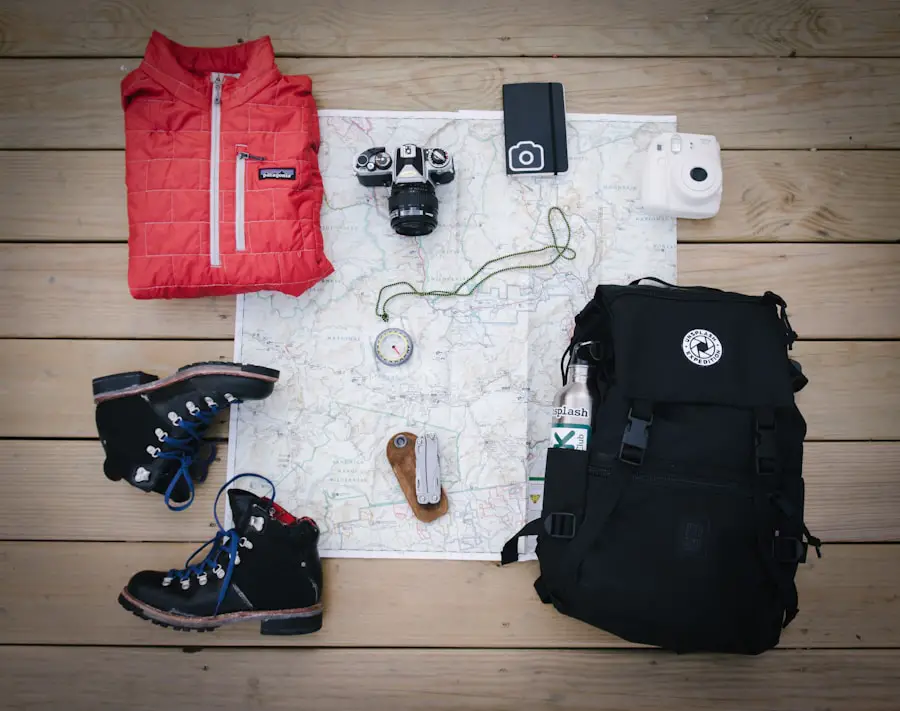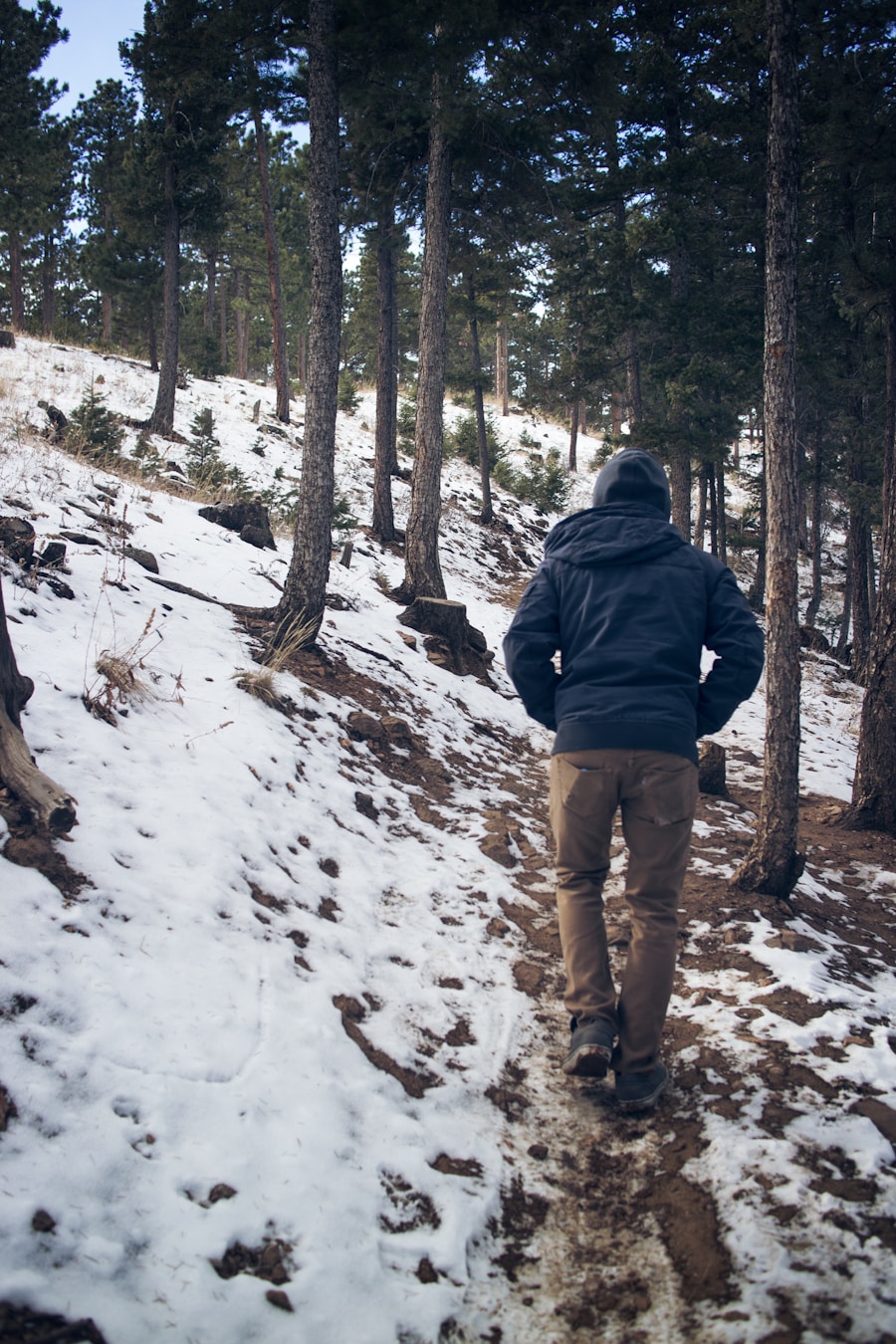When embarking on a winter hiking adventure, the importance of a solid base layer cannot be overstated. Base layers serve as the first line of defense against the cold, providing essential moisture-wicking properties that keep sweat away from the skin. This is crucial because, in cold weather, moisture can lead to rapid heat loss, making you susceptible to hypothermia.
Materials such as merino wool and synthetic fabrics like polyester are popular choices for base layers due to their ability to regulate body temperature while remaining lightweight and comfortable. Merino wool, in particular, is favored for its natural insulating properties and odor resistance, making it an excellent choice for extended hikes. In addition to moisture management, the fit of your base layer is equally important.
A snug fit ensures that the fabric sits close to the skin, maximizing its thermal efficiency. However, it should not be so tight that it restricts movement or circulation. Many brands offer a range of options designed specifically for winter activities, featuring flatlock seams to minimize chafing and strategic ventilation zones to enhance breathability.
When selecting a base layer, consider the specific conditions you will encounter on your hike, as well as your personal comfort preferences. Layering is key; thus, investing in high-quality base layers can significantly enhance your overall winter hiking experience.
Key Takeaways
- Base layers are crucial for wicking moisture away from the skin and regulating body temperature during winter hiking.
- Insulating layers, such as fleece or down jackets, are essential for trapping heat and keeping you warm in cold temperatures.
- An outer shell, like a waterproof and windproof jacket, is necessary to protect yourself from harsh winter weather conditions.
- Choosing the right boots for winter hiking is important, look for insulated, waterproof, and traction-enhanced options to keep your feet warm and safe.
- Hats, gloves, and scarves are essential accessories for added warmth and protection from the cold during winter hiking.
Insulating Layers: Staying Warm in Cold Temperatures
Once you have established a solid base layer, the next step is to add insulating layers that trap body heat and provide warmth. Insulating layers can be made from various materials, including fleece, down, or synthetic insulation. Fleece jackets are a popular choice due to their lightweight nature and excellent warmth-to-weight ratio.
They provide effective insulation while allowing for breathability, making them suitable for high-energy activities like hiking. Additionally, fleece is quick-drying, which is beneficial if you encounter wet conditions. Down insulation is another highly effective option for cold-weather hiking.
Down jackets are renowned for their exceptional warmth and compressibility, making them easy to pack when not in use. However, it’s essential to consider the potential downsides of down insulation; it loses its insulating properties when wet. Therefore, if you opt for down, ensure that it is treated with a water-resistant finish or pair it with a waterproof outer shell to protect against moisture.
Synthetic insulation, on the other hand, retains warmth even when wet and dries faster than down, making it a reliable choice for unpredictable winter weather. Ultimately, the choice of insulating layer will depend on the specific conditions you expect to face and your personal preferences regarding weight and packability.
Outer Shell: Protecting Yourself from Wind and Precipitation

The outer shell is your first line of defense against the elements, designed to shield you from wind, rain, and snow. A high-quality outer shell should be both waterproof and breathable to ensure that you remain dry from external moisture while allowing sweat vapor to escape from within. Look for jackets made with advanced materials such as Gore-Tex or similar technologies that offer a balance between waterproofing and breathability.
These fabrics are engineered to keep water out while allowing moisture from your body to escape, preventing you from becoming clammy and cold. In addition to waterproofing, consider features such as adjustable hoods, cuffs, and hemlines that can help seal out wind and snow. A well-designed outer shell will also include ventilation options like pit zips or mesh-lined pockets that allow for temperature regulation during strenuous activities.
When selecting an outer shell, pay attention to the fit; it should accommodate your insulating layers without being overly baggy. A tailored fit not only enhances comfort but also improves the jacket’s performance by reducing excess fabric that can catch wind or snow. Investing in a durable outer shell can significantly enhance your winter hiking experience by keeping you protected from harsh weather conditions.
Footwear: Choosing the Right Boots for Winter Hiking
| Boot Feature | Description |
|---|---|
| Insulation | Grams of insulation material to keep feet warm in cold temperatures |
| Waterproofing | Level of waterproofing to keep feet dry in wet and snowy conditions |
| Traction | Type of outsole and tread pattern for grip on icy and slippery surfaces |
| Ankle Support | Height and stiffness of the boot to provide stability and prevent ankle injuries |
| Weight | Total weight of the boot for comfort and agility during long hikes |
Selecting the right footwear is critical for winter hiking, as your feet are particularly vulnerable to cold and wet conditions. Insulated hiking boots are designed specifically for winter use, featuring materials that provide warmth while maintaining breathability. Look for boots with a waterproof membrane to keep your feet dry in snow or slush.
Additionally, consider the insulation rating of the boots; options with Thinsulate or similar materials can provide added warmth without excessive bulk.
Another important factor is traction. Winter hiking often involves navigating icy or snowy trails where slip resistance is paramount.Boots equipped with aggressive outsoles made from rubber compounds designed for cold weather will offer better grip on slippery surfaces. Some models even feature built-in gaiters or compatibility with crampons for added traction on steep or icy terrain. It’s also essential to ensure that your boots fit well; they should be snug but not constricting, allowing enough room for thick socks without causing blisters or discomfort during long hikes.
Properly fitted boots will enhance your stability and confidence on challenging winter trails.
Accessories: Hats, Gloves, and Scarves for Added Warmth
Accessories play a vital role in maintaining warmth during winter hikes, as extremities are often the first parts of the body to feel the chill. A good-quality hat is essential; it helps retain heat lost through the head while also protecting your ears from biting winds. Look for hats made from materials like wool or fleece that provide insulation without being overly bulky.
Some hats come with ear flaps or adjustable features to ensure a snug fit that keeps out cold air. Gloves are another critical accessory; insulated gloves or mittens can significantly enhance warmth in frigid conditions. Mittens tend to be warmer than gloves because they allow fingers to share warmth; however, gloves offer better dexterity for tasks like adjusting gear or using trekking poles.
Consider layering with a thin liner glove underneath a thicker insulated glove or mitten for added versatility. Scarves or neck gaiters can also provide additional protection against wind and cold air entering through gaps in your clothing. Opt for materials that wick moisture away from the skin while providing warmth; fleece or wool blends are excellent choices.
Backpack and Gear: Carrying Essentials for Winter Hiking

A well-equipped backpack is essential for any winter hiking excursion, as it allows you to carry necessary gear while keeping your hands free for navigation or trekking poles. When selecting a backpack for winter hiking, look for features such as an adjustable hip belt and padded shoulder straps that provide comfort during long treks. A capacity of 30-50 liters is typically sufficient for day hikes, allowing enough space for extra layers, food, water, and safety equipment.
In addition to the backpack itself, consider what gear you will need to carry. Essential items include extra clothing layers in case of changing weather conditions, food high in calories for energy replenishment, and sufficient water or hydration systems that prevent freezing in cold temperatures. A first-aid kit tailored for winter conditions is also crucial; it should include items like thermal blankets and hand warmers in addition to standard supplies.
Depending on your route and expected conditions, you may also want to carry snowshoes or microspikes for added traction on icy trails.
Navigation Tools: Navigating Winter Trails Safely
Navigating winter trails can be particularly challenging due to snow cover obscuring familiar landmarks and trails becoming less visible. Therefore, having reliable navigation tools is essential for safe hiking in winter conditions. A topographic map of the area you plan to hike is invaluable; it provides detailed information about terrain features that can help you stay oriented even when trails are not clearly marked.
In addition to traditional maps, a GPS device or smartphone app can enhance navigation capabilities by providing real-time location tracking and route planning features. However, it’s important not to rely solely on electronic devices; batteries can drain quickly in cold weather, so always carry a backup map and compass as a fail-safe option. Familiarizing yourself with how to use these tools before heading out is crucial; practice reading maps and using a compass in familiar areas so that you feel confident when navigating more challenging winter landscapes.
Safety Equipment: Emergency Supplies for Winter Hiking
Safety should always be a top priority when embarking on winter hikes, as conditions can change rapidly and unexpectedly. Carrying emergency supplies can make a significant difference in case of an unforeseen situation such as getting lost or injured on the trail. A well-stocked emergency kit should include items like a whistle for signaling help, a multi-tool or knife for various tasks, and a fire-starting kit to provide warmth if needed.
Additionally, consider packing an emergency blanket or bivy sack that can provide insulation if you find yourself stranded overnight due to unforeseen circumstances. Headlamps with extra batteries are also essential; daylight hours are shorter in winter months, so being prepared with adequate lighting can help you navigate safely back to your starting point if your hike takes longer than expected. Lastly, always inform someone of your planned route and expected return time before heading out; this simple step can be crucial in ensuring help is dispatched if you do not return as planned.
By carefully considering each layer of your winter hiking outfit—from base layers to safety equipment—you can create a comprehensive system that keeps you warm, dry, and safe while enjoying the beauty of winter landscapes.
If you’re planning a winter hiking trip, you’ll want to make sure you have the right gear, including a good pair of traveler pants. Check out this article on traveler pants for some recommendations on comfortable and durable options. And don’t forget to pack a portable phone charger to keep your devices powered up while you’re on the trails – here are three portable phone chargers that are perfect for your next adventure. Lastly, if you’re looking for a travel razor to keep you looking sharp on the go, be sure to read this article on the
